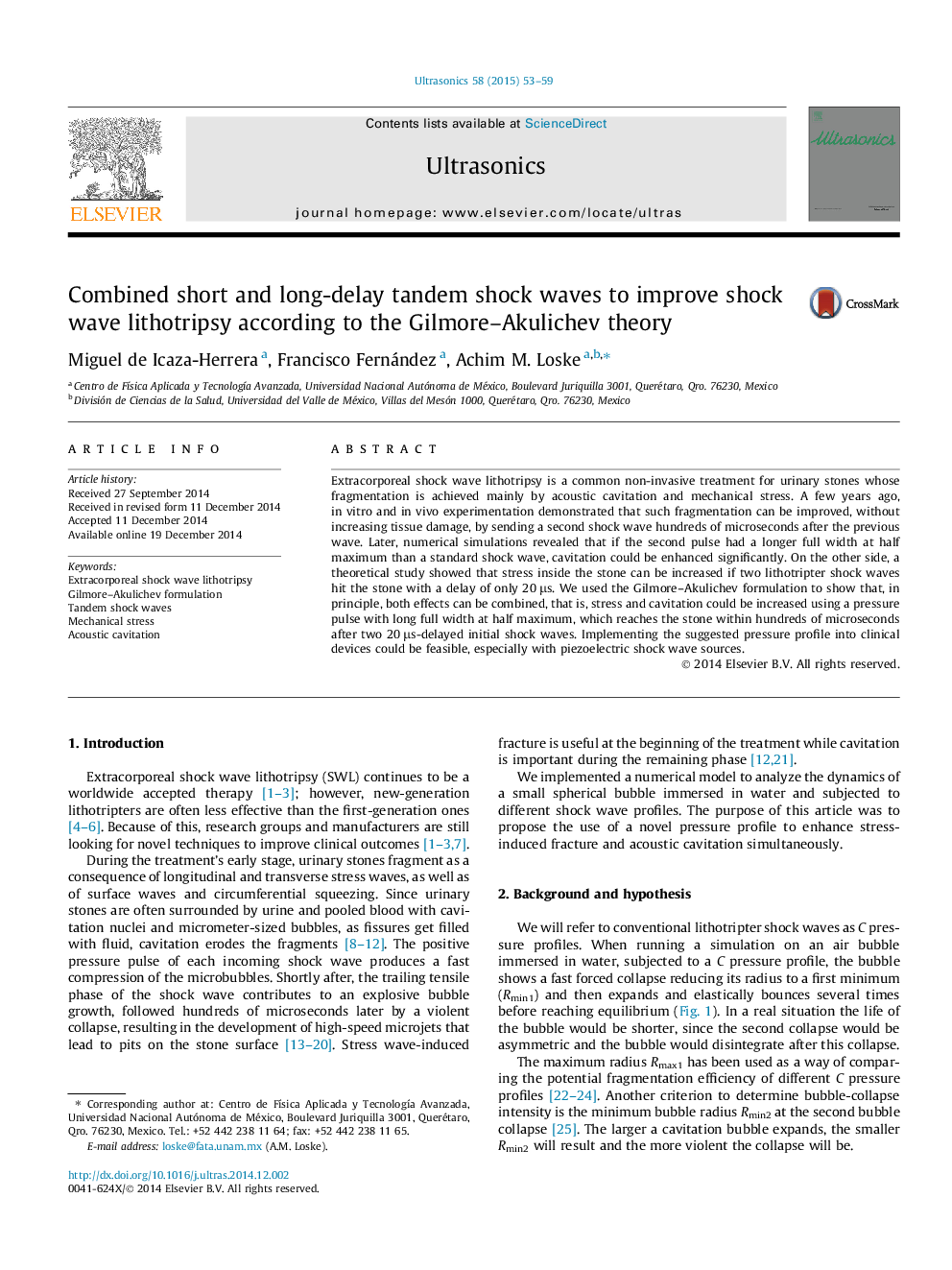| Article ID | Journal | Published Year | Pages | File Type |
|---|---|---|---|---|
| 1758744 | Ultrasonics | 2015 | 7 Pages |
Abstract
Extracorporeal shock wave lithotripsy is a common non-invasive treatment for urinary stones whose fragmentation is achieved mainly by acoustic cavitation and mechanical stress. A few years ago, in vitro and in vivo experimentation demonstrated that such fragmentation can be improved, without increasing tissue damage, by sending a second shock wave hundreds of microseconds after the previous wave. Later, numerical simulations revealed that if the second pulse had a longer full width at half maximum than a standard shock wave, cavitation could be enhanced significantly. On the other side, a theoretical study showed that stress inside the stone can be increased if two lithotripter shock waves hit the stone with a delay of only 20 μs. We used the Gilmore-Akulichev formulation to show that, in principle, both effects can be combined, that is, stress and cavitation could be increased using a pressure pulse with long full width at half maximum, which reaches the stone within hundreds of microseconds after two 20 μs-delayed initial shock waves. Implementing the suggested pressure profile into clinical devices could be feasible, especially with piezoelectric shock wave sources.
Keywords
Related Topics
Physical Sciences and Engineering
Physics and Astronomy
Acoustics and Ultrasonics
Authors
Miguel de Icaza-Herrera, Francisco Fernández, Achim M. Loske,
